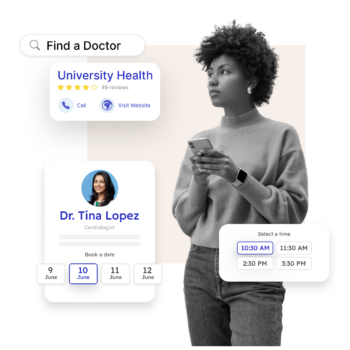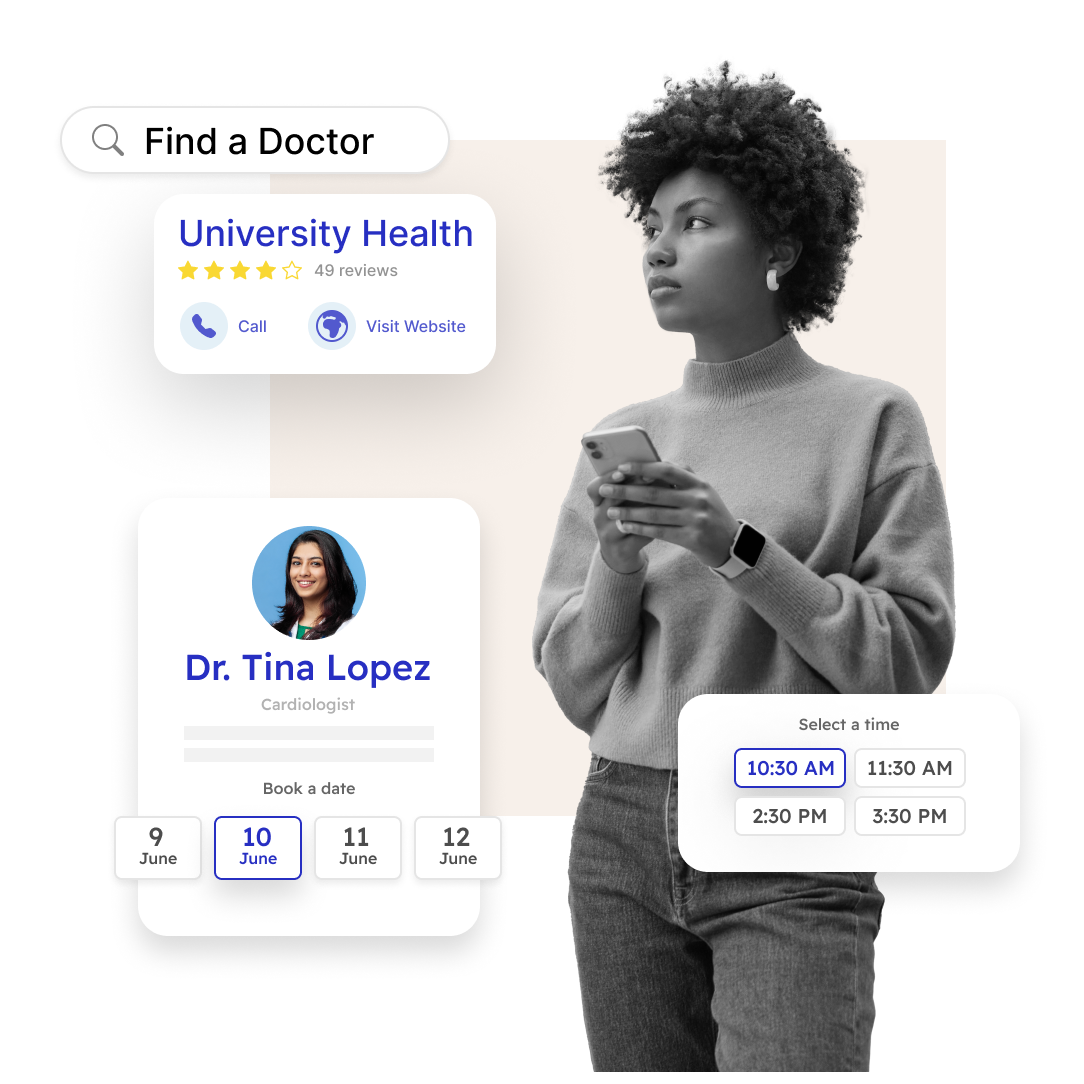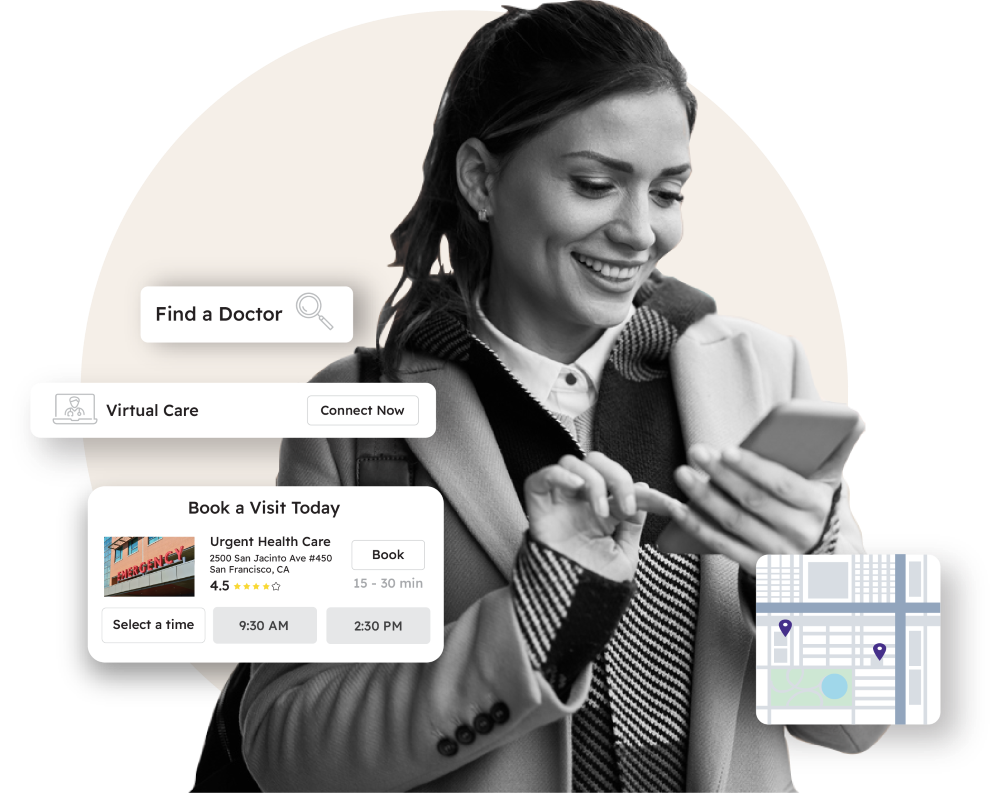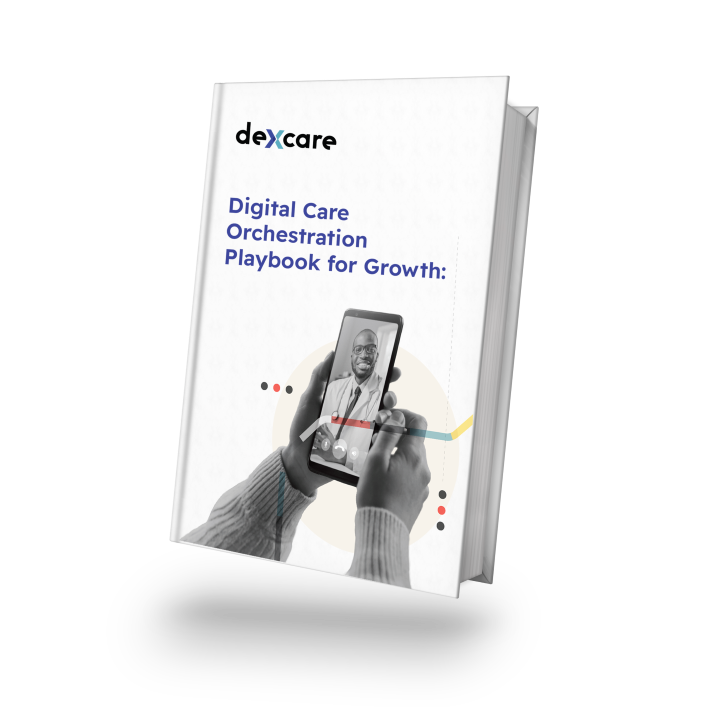How to Optimize the Digital Front Door
Healthcare’s digital front door is a strategy based around technology that lets patients easily select care options whenever they want, using whatever device they choose. A core tenet is to mirror the convenience and seamless experience that e-commerce offers to better attract and capture digitally native consumers. And it’s what they expect.
While a digital front door varies among health networks – as there’s no set how-to checklist of steps and features – there are areas of focus that will help optimize any strategy.

Speed counts
Website performance is critical for getting people through the digital front door. Page speed is the core metric for website performance, and it’s earned that spot for a reason. In healthcare, 71% of patients look for providers online – mostly on mobile devices – and half of those users abandon sites that take more than 3 seconds to load. That’s right. A slow website can eliminate half of your inbound traffic.
One strategy to ensure an optimized experience is to build websites that place performance in the foundation. Performance-driven frameworks, like Qwik, guarantee that each page loads instantly, no matter where discovered. Be it from search, email, or direct traffic, performance frameworks meet the expectations of today’s patient.
Performance is no longer a nice to have, but a must have.
It doesn’t matter if the goal is connecting a patient with a doctor, finding the correct clinic location, or conducting a telehealth visit, every step of the care experience needs to be fast. From using on-site search for discovery to the process of setting up an appointment online, a fast experience is fundamental to an effective digital front door.
Make search powerful
When consumers browse e-commerce sites, they are accustomed to using a single search bar to find anything – from a product and location to reviews. Healthcare should offer the same convenience. This means a universal search interface with built-in logic to decipher whether a user is looking for a provider, trying to book a flu shot, or better understand their care options.
Rather than creating separate care funnels – with multiple entry points – universal search offers a single location for customers to self-select the right care option. From any page on your website, customers can be routed to the right funnel.
Powerful search tools, like natural-language site search, allows systems to eliminate multi-step discovery options, like finding a doctor or a location. Instead, one search interface can surface an array of care options to reduce the steps to book an appointment.
The rigid search tools of old are just that – outdated. Health search can offer natural language capabilities, as well as unify your system data to showcase same-day options, while managing availability on the backend. Search can now translate customer intent into accurate and relevant care results. Discovery is in one place, on any page, and able to showcase all care-routing options.
E-commerce as a model
Probably the best digital front door tactic for healthcare is using e-commerce best practices when thinking about patient convenience. E-commerce and online retail have been honing the consumer user experience for years and offer many lessons on providing effective and convenient service.
People have come to expect a certain level of seamlessness in the online experience and healthcare isn’t exempt from this expectation. This means site visitors should find the discovery process frictionless. Everything from booking an appointment to a virtual visit should be fast and seamless. Performance, mobile-first, search, Google listings, and the ability to remain nimble are elements of retail that have an immediate place in delivering a modern, digital front door.






